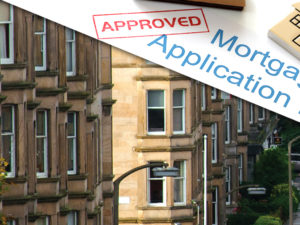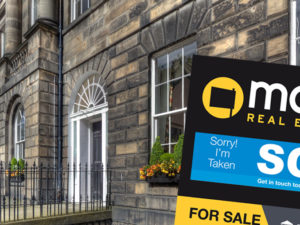
I’m going to divide this Property Market Update into two sections. First, a general market update which hopefully, as always, helps to give an ACTUAL take on what is happening in the property market rather than headline-grabbing statistics that can often be read in the newspapers. Second, I’ll cover the new Stamp Duty regime, announced in the Chancellor’s Budget last week.
General Property Market Update – March 2010 – Is Property Actually Selling and What’s Happening to Property Prices?
Press reports are still mixed when it comes to what is happening in the property market in Scotland: depending on who you believe, prices are either going down again or they’re going up. It’s certainly hard to disagree with one side of that argument: the problem is deciding which side. Mortgage approvals have been reported as being lower than expected. Equally, lack of supply of new properties coming to the market is certainly causing prices to remain pretty stable, even if there isn’t a huge leap in the number of buyers getting finance to buy a property.
From our point of view, the market is a lot healthier than it was this time last year. There is more listing activity (people putting their properties on the market) but there is equally more buying activity (people putting offers in on properties that we are marketing). The last thing we would want is to be building a stockpile of properties that remain unsold and thankfully the increase in ‘listing’ is also being matched by the increase in sales.
There is still a distinct difference between family homes and smaller flats in terms of activity levels.
My heart takes a little happy leap when I see a family home coming on the market with us. Why? Because I’m confident that we will have sold it within a couple of weeks. Property crisis: what crisis? That’s certainly true in the family home (larger flats, semi-detached and detached houses) sector, particularly in well-established residential areas.
Having said that, activity in the one bedroom property market (true first time buyer territory) remains pretty flat (pardon the pun). Buyers in this sector of the market can afford to be quite choosy at the moment. As a result, we are seeing the very best examples of such properties selling quite quickly and generating a lot of interest: high ceilings, original Victorian or Georgian features, good room sizes, spacious bathrooms. On the other hand, slightly less well-looked-after examples are sitting on the market for quite some time. There certainly is a very good case to be made, at the moment, for putting some money into bringing your property right up to scratch before putting it on the market, if you are in this sector of the market. However, if you are going to put money into doing the flat up before sale, make sure to do it ‘properly’: one sure fire way of ensuring that your property doesn’t sell is to do a half-hearted ‘patch’ job on it, inflate the price to take account of the ‘renovation’ and then watch as buyers bypass your property on the basis that they’d want to completely redo everything anyway.
First Time Buyers Now Pay No Stamp Duty on Property Up to £250,000 – What Will This Do to the Property Market in Scotland?
The Chancellor’s last Budget before the General Election gave him one last opportunity to reveal some crowd-pleasing policies that would divert media attention, just briefly, from his slightly frightening Bond-villainesqe eyebrows. One of them in particular (policies, not eyebrows) was important to anyone who is involved in the property industry: the introduction of a Stamp Duty exemption for First Time Buyers on properties up to £250,000, in force for the next two years.
The argument behind this (and yes, I did actually read the entire Budget Report amongst very strong cups of coffee) was to stimulate the property market by encouraging First Time Buyers (FTBs) back to the property market. Without this lifeblood entering the market, the rest of the property market stalls.
So, will this work or is it just political grandstanding? Most particularly, will it have the desired effect in SCOTLAND? It’s a Million Dollar Question but here’s my take on things, for what it’s worth.
I actually do think that the change to the Stamp Duty regime will have a positive effect on the property market in Scotland. We saw this during the last period of Stamp Duty ‘holiday’ where the threshold for Stamp Duty was temporarily raised from £125,000 to £175,000 and the removal of this exemption does seem to have caused the number of property purchases to have dropped slightly in Scotland.
First, and most importantly, it is completely discriminatory against people who already own a property. I accept that the market needs First Time Buyers for it to be healthy and that a healthy market benefits everyone involved in it. However, it seems perverse to me that a First Time Buyer will pay no Stamp Duty on a property of £200,000 and yet a family, struggling to move out of their 2 bed £120,000 flat to a £200,000 semi-detached house will have to pay around £2000 in Stamp Duty. A First Time Buyer who wants to buy a £200,000 property will probably need a £50,000 deposit and a salary of somewhere between £40,000 and £50,000 per year in order to get a decent mortgage rate. This is precisely the kind of person who probably doesn’t need the tax break as much as the family whose finances are already stretched by having a child and who want to move out of their top floor flat into a semi-detached house. For them, the tax break could help them to scrape together the deposit that they need to move.
Second, it ignores the fact that the Stamp Duty bandings are completely unfair in the first place. Property prices have almost tripled in a decade and yet, not surprisingly, the Stamp Duty bandings have hardly changed. Is it fair that a first time buyer can purchase a property worth £249,000 without paying ANY Stamp Duty and yet Stamp Duty jumps from £0 to £7800 if they purchase a £260,000 property? Personally, I don’t think so. I think that all of the Stamp Duty bandings need an overhaul to make them fairer. This latest measure in the Budget is a sticky plaster.
Third, this policy seems to be aimed squarely at gathering votes in the south east of England. My company’s Head Office is in Edinburgh which along with Aberdeen has the highest average property price in Scotland. Even so, the average price of a property in Edinburgh is around £200,000. This means that the majority of Edinburgh’s housing stock will now be stamp duty exempt for first time buyers. In other words, although this policy is allegedly aimed at First Time Buyers, for the majority of the UK and most certainly Scotland, the properties that now fall within the Stamp Duty exemption for First Time Buyers are not the types of properties that First Time Buyers actually buy. It’s hard not to see this as being a policy that is aimed at young professionals in the south east of England who would most probably have been voting Conservative at the next election prior to this latest policy maybe making them think twice.
Fourth, this is going to cause a horrible ‘concertina’ effect on property prices around the Stamp Duty thresholds/bandings. Why? Even before this change, if your property was worth £265,000, you were struggling to get many buyers who would want to pay any more than £250,000 for it because buyers paid 1% Stamp Duty for a property of £250,000 but 3% for a property of £251,000. This led to an artificial compression of prices around £250,000 and a distorted market. Now it will be even more extreme. Previously, the difference in Stamp Duty payable between a £250,000 property and a £251,000 property was around £5000. Now it’s £7500 (if you’re a first time buyer, of course!). This can only lead to even more properties being artificially pushed below the £250,000 mark. How much over £250,000 is your property going to have to be worth before people don’t even think, ‘I’m not paying a penny over £250,000′ so that they can avoid paying nearly £8000 of Stamp Duty? I think it will be about £280,000. Therefore, if your property is worth £270,000 I honestly think there will be far less buyers prepared to go over the £250,000 mark in offering on your property.
Conclusion: the Stamp Duty changes seem to benefit a very small minority of First Time Buyers who are based in the more expensive south east of England. It also shouldn’t be ignored too that people purchasing properties over £1,000,000 now will pay 5% Stamp Duty rather than 4% as they currently do, in order to fund this tax ‘cut’. It will probably also have the effect of further concentrating property prices around the Stamp Duty thresholds/bandings, driving property prices down for people whose properties are worth between £251,000 and £280,000. The Stamp Duty regime remains unfair and it would surely have been preferable just to overhaul the Stamp Duty bandings altogether. But then that’s not quite the same vote winner, is it?!

















